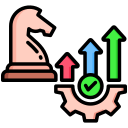Chosen theme: The Role of Visualization in Personal Goal Achievement. Step into a clear, compelling mental movie of your future, then let your actions catch up. Join our community, subscribe for weekly prompts, and share your current visualization challenge in the comments.
Why Visualization Works: Brain and Behavior
Elite performers mentally rehearse before executing, strengthening neural pathways similar to physical practice. When you visualize detailed steps, your brain encodes cues and sequences, making execution smoother, faster, and less intimidating when the real moment arrives.

Designing Your Ideal Goal Imagery
See the spreadsheet cells, hear the applause, smell the track, feel the pen pressing the page. The sharper and more grounded your imagery, the more convincingly your mind treats it as familiar territory rather than wishful thinking.
Designing Your Ideal Goal Imagery
Don’t stop at the highlight reel. Visualize the unglamorous steps: opening the laptop, tying shoes, declining distractions. When the scene includes process and obstacles, motivation meets realism, and grit naturally grows alongside optimism.


Morning Micro-visuals
Spend ninety focused seconds after waking replaying today’s key behavior: the first email sent, the first page written, the first mile jogged. Short repetitions prime your mindset before decision fatigue sets in and the day derails intention.
Scripting and Storyboarding
Write your day in the present tense, then sketch three panels: start, struggle, solution. Seeing the struggle in advance reduces surprise and panic, making you calmer and more resourceful when friction shows up exactly as predicted.
Evening Replay and Adjustment
At night, replay the day like game film. Where did attention drift? Revise tomorrow’s imagery accordingly. This gentle post-game review prevents rumination, turns lessons into plans, and helps you sleep with purpose instead of anxiety.
Common Pitfalls and How to Avoid Them
If your mental movie only shows the triumphant end, your brain may confuse imagining with accomplishing. Always visualize friction—temptations, delays, detours—plus your response. This inoculates you against shock and preserves momentum when reality bites.
Common Pitfalls and How to Avoid Them
“Be better at work” is fog. “Present three crisp slides by 10 a.m., request feedback, iterate once” is light. Vivid, measurable images convert aspirations into navigable tasks that your nervous system can recognize and execute.
Common Pitfalls and How to Avoid Them
Over-attachment to outcomes amplifies disappointment and avoidance. Balance scenes of the goal with scenes of effort, rest, and recovery. This keeps confidence grounded and builds a sustainable rhythm resistant to burnout and boom-bust motivation.
Real Stories: How Visualization Changed the Trajectory
Maya sketched the final 600 meters every night—crowd noise, calf burn, turning the last corner. She also pictured tying laces in rain. When race day brought drizzle, her body felt at home, and she negative-split comfortably.
Real Stories: How Visualization Changed the Trajectory
Luis imagined opening his textbook at the same cafe stool, phone in backpack, timer set. He visualized asking one clarifying question after lecture. Grades rose not from luck, but from repeatedly living the scene until it became habit.

Measure, Iterate, and Celebrate
Lead Indicators You Can See
Before big wins arrive, notice tiny shifts: shorter start-up time, fewer context switches, quicker recovery after interruptions. Visualize these micro-wins specifically, and you’ll catch them sooner, reinforcing the loop between mental rehearsal and daily execution.
Feedback Loops with Journals
Use a two-column journal: image versus reality. What matched? What missed? Adjust tomorrow’s scene using today’s data. Over weeks, the gap narrows, confidence rises, and your goals feel less like cliffs and more like staircases.
Micro-celebrations to Sustain Momentum
Celebrate adherence, not luck. A quick fist pump after completing the visualized task wires satisfaction to effort. Pair small rewards with your routines to keep motivation renewable, especially during long projects where external validation arrives slowly.
